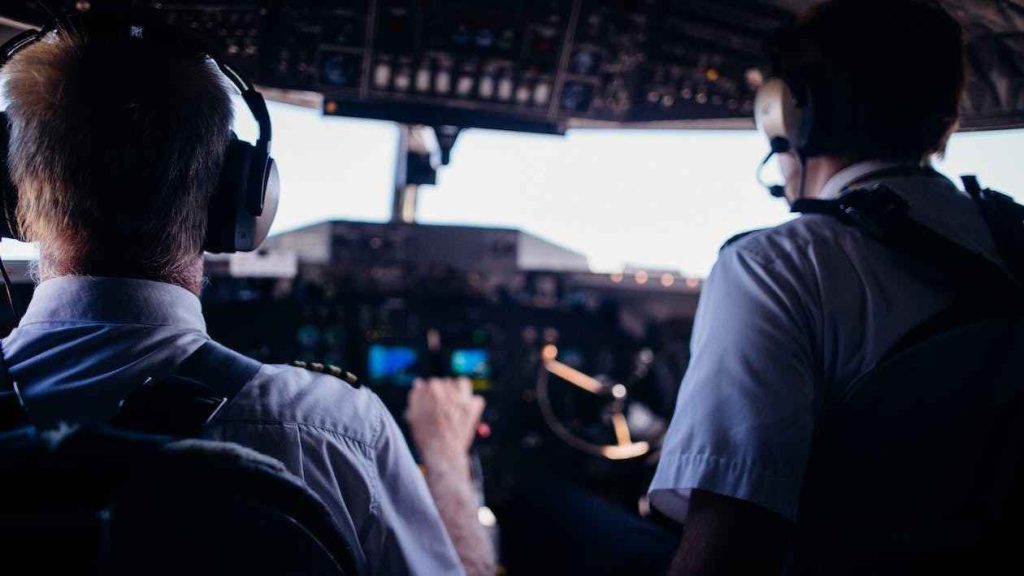The aviation industry, a vital component of global transportation, is a complex and sophisticated sector that demands an in-depth understanding of various technological aspects. To be a part of this dynamic field requires not only a strong passion for aviation but also proficiency in a range of technological systems and instruments that ensure the safe and efficient operation of aircraft. These systems include, but are not limited to, flight management systems, air traffic control systems, and sophisticated navigation and weather radar. The high degree of technical acumen required and the rigorous and demanding training processes often serve as deterrents for many aspiring professionals. Moreover, the need for continuous learning and adaptation to ever-evolving technologies adds another layer of challenge. Hence, while the allure of the aviation industry is undeniable, the path to being a part of it is often less trodden due to these daunting prerequisites.

Contents
Avionics Software
This includes all the software that is embedded in airplane systems and instruments. Understanding how to work with this software is crucial for diagnosing and troubleshooting issues. In fact, whether you are looking to click here for more information about DC power supplies for your airplane or hoping to be an aviation maintenance technician, a thorough understanding of avionics software is imperative. This includes knowledge of programming languages used in avionics systems such as C and Ada, and skills in fault diagnosis and correction. Avionics software options are constantly evolving, and the ability to keep up with these advancements is vital for a successful career in the aviation industry.
Flight Management Systems (FMS)
This technology is used for planning, navigating, and monitoring an aircraft’s flight. Understanding FMS is critical as it greatly simplifies in-flight management and increases flight efficiency. An FMS integrates various components such as autopilot, navigation systems, and communication systems to provide a comprehensive solution for flight management. The system takes inputs from the pilot and automatically calculates the most optimal route, considering factors such as weather conditions and air traffic congestion. It also allows for in-flight adjustments based on real-time data, further enhancing flight safety. Understanding FMS and working with it efficiently is essential for pilots, air traffic controllers, and aircraft maintenance professionals.
Air Traffic Control Systems (ATCS)
ATCS is responsible for managing the movement of aircraft within the airspace and on the ground. They ensure the safety and efficiency of flights. ATCS includes various technologies, such as radar, communication systems, and data processing systems. With the rapid growth of air travel, ATCS has become increasingly complex and relies heavily on advanced technology to manage large volumes of air traffic. Understanding how these systems work and being able to communicate with air traffic controllers effectively is crucial for pilots and other aviation professionals.
Ground Proximity Warning System (GPWS)
This high-tech system warns pilots if their aircraft is in immediate danger of flying into the ground or an obstacle. It uses various sensors and databases to monitor the aircraft’s position and altitude, providing timely alerts to the pilot. GPWS is a crucial safety feature in modern aircraft and requires a thorough understanding of its technology for effective use. Aspiring pilots and aviation professionals must be proficient in operating GPWS and know its limitations to ensure safe flights.
Weather Radar Systems
Pilots use these systems to avoid severe weather. They provide critical data about storms and other atmospheric phenomena. Understanding how to interpret and use this data is essential for safe flight operations, as weather conditions can significantly impact an aircraft’s performance. Moreover, with the increasing frequency of extreme weather events, being able to utilize weather radar systems effectively is crucial for pilots and air traffic controllers.
In-flight Entertainment Systems
Though not directly linked to flight operations, understanding this technology can still be helpful. These systems are used to enhance passenger experience during long flights. They include features such as live TV, movies, music, and internet access. Being able to troubleshoot and fix issues with these systems can be a valuable skill for in-flight crew members and maintenance technicians. For aspiring aviation professionals, having a basic knowledge of in-flight entertainment systems can also make you stand out during job interviews.

Aircraft Communications Addressing and Reporting System (ACARS)
This digital datalink system transmits short messages between aircraft and ground stations. It has become an integral part of modern aviation operations, providing a reliable means of communication for pilots and ground personnel. Understanding the technology behind ACARS and using this system efficiently is crucial for effective communication in the aviation industry. Moreover, ACARS is also used for sending and receiving important flight information, making it an essential tool for pilots and air traffic controllers.
Automatic Dependent Surveillance-Broadcast (ADS-B)
This surveillance technology allows aircraft to determine its position via satellite navigation and periodically broadcasts it, enabling it to be tracked. ADS-B is used by air traffic control to improve surveillance and reduce the risk of collisions. With its increasing adoption in aviation, understanding how ADS-B works and being able to operate it is essential for pilots and air traffic controllers. Furthermore, many new aircraft now come equipped with ADS-B, making it a vital technology for aviation maintenance professionals as well.
From avionics software to advanced navigation and communication systems, being proficient in these technologies enhances career prospects and ensures the safety of all those involved in air travel. Continuously learning and adapting to new technologies is a lifelong process for aviation professionals, and it is this dedication to staying up-to-date that makes the industry one of the most cutting-edge fields. So, before you enter the aviation industry, make sure to educate yourself on these essential tech things and be ready for an exciting and challenging career in the skies.



